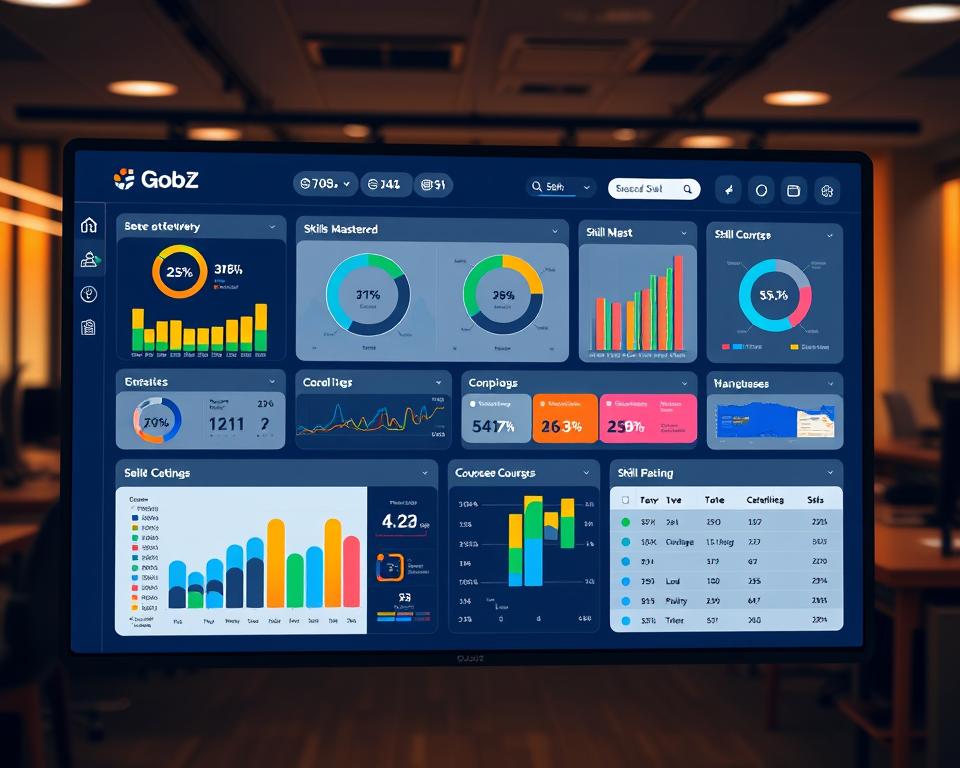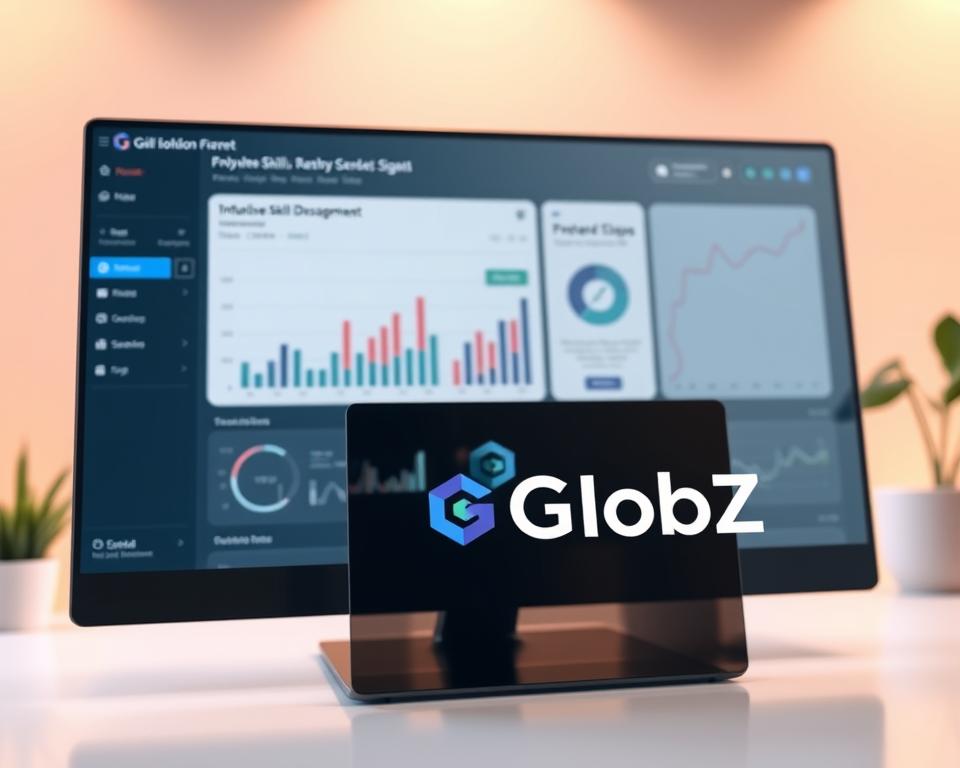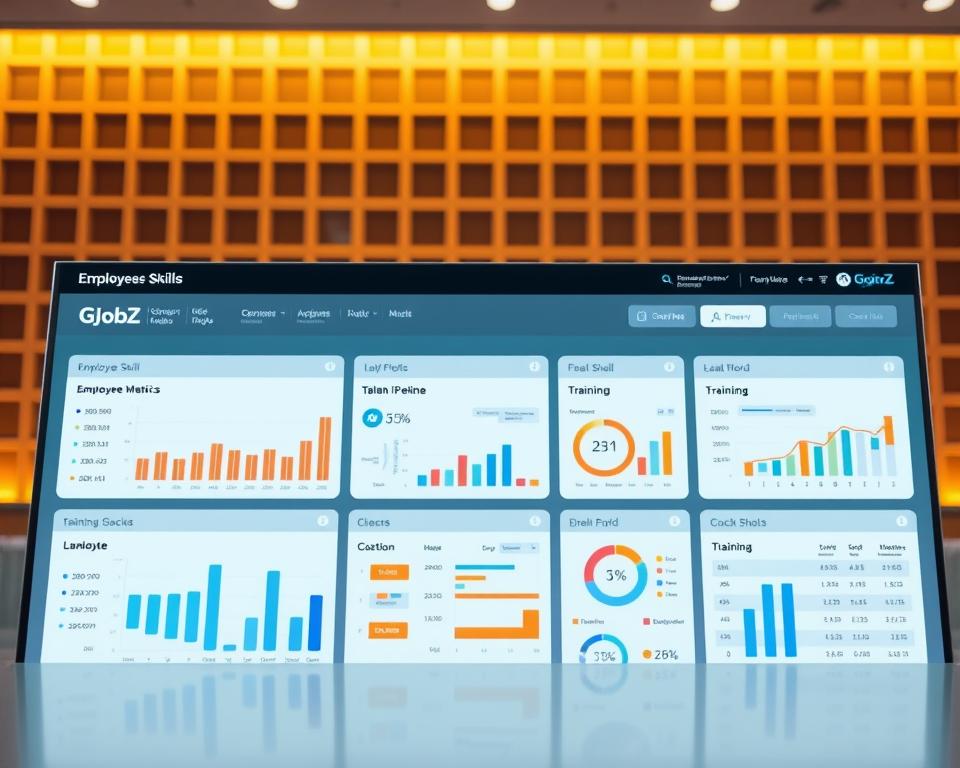
Budget tools for tracking employee skill development
Despite $370 billion spent annually on corporate training in the U.S., most organizations struggle to quantify their teams’ capabilities. Why? Over two-thirds still rely on manual spreadsheets and fragmented systems to assess talent – a method as effective as navigating a highway with a paper map.
Legacy approaches create invisible barriers to growth. Disconnected data silos hide critical competency gaps, while managers waste hours reconciling outdated records. The result? Missed opportunities, stalled projects, and teams unprepared for emerging challenges.
Modern solutions change this equation. Specialized platforms now aggregate real-time insights into workforce strengths, learning progress, and leadership potential. These systems don’t just track abilities – they spotlight where strategic investments in talent generate the highest returns.
Key Takeaways
- Traditional spreadsheets fail to capture evolving workforce capabilities
- Centralized data reveals hidden skill shortages impacting productivity
- Alignment between talent development and organizational goals drives success
- Real-time analytics enable proactive resource allocation decisions
- Integrated performance metrics simplify progress measurement
Introduction to Budget Tools and Employee Skill Development
Did you know 65% of HR managers report team members working on mismatched projects weekly? Manual tracking systems create chaotic workflows where competencies rarely align with organizational priorities. This disconnect fuels frustration – 58% of professionals say unclear growth paths directly impact their engagement.
Breaking the Cycle of Inefficiency
Outdated methods force leaders to make critical decisions with incomplete data. A manufacturing company recently discovered their engineers spent 19% of their time on tasks unrelated to core expertise. Modern platforms eliminate these blind spots by:
- Mapping individual strengths to high-impact projects
- Identifying hidden proficiencies through AI analysis
- Automating progress updates across departments
Financial Planning Meets Talent Strategy
Forward-thinking organizations now treat capability building as a growth accelerator rather than an expense. By linking learning initiatives to financial outcomes, companies achieve 23% faster promotion cycles and 31% lower recruitment costs. One tech firm redirected $2.8M annually from external hires to internal upskilling after implementing competency dashboards.
These systems transform abstract potential into measurable results. “Visibility into team capacities lets us deploy resources where they’ll create maximum value,” notes a Fortune 500 training director. The shift from reactive budgeting to predictive investment models marks a new era in workforce optimization.
Understanding the Need for Budget-Conscious Skill Management
A 2023 industry report reveals 74% of companies struggle with workforce capability shortages despite increased training budgets. Rising costs for upskilling programs – up 18% since 2020 – demand smarter resource allocation. Organizations can’t afford disjointed approaches that drain funds without measurable progress.

Why Cost-Effective Solutions Matter
Traditional methods create financial leaks. Manual tracking consumes 22% more staff hours than automated systems, while outdated assessments miss 40% of critical capability gaps. Modern software cuts unnecessary expenses by pinpointing exact development needs through AI-driven analysis.
These platforms help teams:
- Identify high-impact training areas using real-time data
- Reduce redundant learning modules by 35% on average
- Track competency growth across departments simultaneously
Strategic Alignment Through Technology
Leading solutions connect individual growth to organizational objectives. One logistics company achieved 28% faster project completion by aligning employee certifications with operational targets. Key features like progress dashboards and predictive analytics turn abstract potential into concrete business outcomes.
Integrated systems eliminate guesswork from talent investments. They map learning paths directly to revenue-generating activities, ensuring every training dollar supports measurable performance improvements. This approach transforms development initiatives from cost centers into strategic accelerators.
Key Features to Look for in Budget Tools
Organizations using advanced capability systems report 34% faster decision-making compared to basic spreadsheets. The right platform transforms raw data into actionable intelligence, bridging gaps between financial planning and talent growth.
![]()
Essential Functionalities for Cost Tracking
AI-powered skills taxonomies automatically categorize competencies across departments. These systems analyze learning patterns to predict which investments deliver maximum impact. Real-time workforce insights help managers:
- Monitor training costs per skill category
- Compare projected vs actual development expenses
- Redirect funds to high-priority areas instantly
One healthcare network reduced redundant courses by 41% using automated spend analysis. Their “cost-per-certification” metric became a game-changer for resource allocation.
User-Friendly Interfaces and Reporting Capabilities
Intuitive dashboards display critical metrics through color-coded visuals. Drill-down features let teams explore individual progress without IT assistance. Mobile access ensures managers approve budgets and track milestones from any location.
Customizable reports align with specific departmental needs. A manufacturing client achieved 92% adoption rates by letting supervisors create personalized views. Simplified data exports integrate seamlessly with existing financial systems, eliminating manual reconciliation.
Exploring “Budget tools for tracking employee skill development”
The disconnect between training investments and workforce capabilities costs companies millions annually. Specialized platforms now bridge this gap through intelligent analytics that connect financial planning with talent growth strategies.

Redefining Organizational Learning
These systems stand apart through predictive gap analysis. Unlike static spreadsheets, they use machine learning to detect emerging competency shortages before projects stall. Key differentiators include:
- Adaptive learning roadmaps tailored to individual strengths
- Cross-departmental proficiency heatmaps
- Automated budget reallocation triggers
From Insight to Action
A national retail chain transformed operations using these insights. Their platform identified underdeveloped leadership skills in 37% of managers through performance pattern analysis. Targeted coaching programs reduced external hiring costs by $1.2M within nine months.
The true power lies in dual functionality. Teams optimize training expenses while building future-ready capabilities. Real-time dashboards show how specific skills impact revenue streams, enabling smarter investment decisions.
“Our workforce strategy became a profit driver rather than a cost center,” reports the company’s CLO. This approach turns abstract potential into measurable growth, aligning personal development with organizational success.
Top Budget Tools in the Product Roundup
Selecting the right platform makes all the difference in aligning talent growth with financial constraints. Leading solutions combine granular analytics with intuitive interfaces, transforming how organizations measure and enhance capabilities.

Highlights from Industry-Leading Platforms
iMocha stands out with AI-driven skills assessments that adapt to evolving role requirements. Its real-time reporting dashboard identifies proficiency gaps across departments, earning a 4.7/5 user rating for predictive analytics accuracy.
Runn excels in capacity planning, linking project demands with team competencies. Users praise its visual workflow mapping, which reduces mismatched assignments by 29%. Mid-sized companies particularly benefit from its scalable pricing model.
Skills Base simplifies compliance tracking through automated certification alerts. The platform’s “skill adjacency” feature suggests lateral growth opportunities, helping 83% of surveyed organizations reduce redundant training modules.
- Enterprise focus: iMocha’s deep integration with HR systems suits large corporations
- Agile teams: Runn’s drag-and-drop interface streamlines resource allocation
- Regulated industries: Skills Base dominates in healthcare and manufacturing compliance
These platforms share a common strength – translating raw data into strategic insights. Customizable performance metrics let leaders prioritize investments where they’ll impact revenue streams most directly. As one HR director notes, “Seeing skill trajectories alongside budget constraints changed our entire development strategy.”
Cost-Benefit Analysis of Budget Tool Solutions
Organizations face a critical decision when selecting systems to enhance workforce potential. Effective platforms must prove their value through measurable financial returns while maintaining operational flexibility. Let’s examine how modern solutions balance fiscal responsibility with transformative results.

Evaluating ROI and Long-Term Savings
Advanced analytics reveal hidden inefficiencies traditional methods miss. A healthcare provider reduced training expenses by 38% after identifying redundant courses through automated data analysis. Key metrics to track include:
| Metric | Traditional Approach | Modern Solution |
|---|---|---|
| Cost per employee | $2,100 | $1,450 |
| Time spent on reporting | 14 hrs/month | 3 hrs/month |
| Accuracy in skill gap detection | 62% | 89% |
| ROI timeframe | 18 months | 7 months |
These systems spotlight underutilized capabilities within teams. One software company discovered 22% of their engineers had untapped expertise in AI – knowledge that accelerated three product launches.
Balancing Quality with Affordability
Premium platforms often justify higher costs through precision. A retail chain achieved 41% faster onboarding using a mid-tier solution with AI-driven progress tracking. Critical factors include:
- Scalable pricing models that grow with team needs
- Customizable reports matching departmental priorities
- Integration depth with existing HR infrastructure
The right choice eliminates capability gaps without overspending. As one CFO noted, “Our platform pays for itself by preventing misallocated training funds.” This strategic approach turns development budgets into growth engines rather than expenses.
Integrating Budget Tools with Existing HR and Learning Systems
Seamless integration bridges the gap between financial planning and workforce growth. Over 68% of organizations report data fragmentation as their top challenge when aligning talent strategies with business goals. Unified platforms eliminate manual transfers between disconnected systems, saving teams 11 hours monthly on administrative tasks.

Seamless Data Synchronization
Modern solutions sync updates across platforms every 15 minutes. This real-time flow ensures training progress, certification statuses, and competency metrics stay current in both HR databases and financial systems. A logistics company reduced reporting errors by 73% after implementing automated API connections between their LMS and accounting software.
Maximizing Platform Interoperability
Leading platforms offer single sign-on (SSO) and pre-built connectors for popular HRIS ecosystems. These features let managers access insights without switching between multiple interfaces. Key benefits include:
- Automatic user role assignments based on existing permissions
- Centralized dashboards showing cross-platform analytics
- Alert systems flagging discrepancies in real time
One healthcare network achieved 89% faster decision-making by merging talent data with budget tools. Their leadership now spots capability gaps before projects stall, ensuring training funds address urgent needs. This connectivity turns scattered information into strategic insights that drive measurable growth.
Strategies for Effective Employee Skill Development
Aligning learning initiatives with organizational needs transforms random training into strategic capability building. Research shows data-driven plans boost engagement by 47% compared to generic programs. The secret lies in designing experiences that address real-world challenges while advancing business priorities.

Building Precision-Focused Learning Paths
Effective programs start by mapping individual experience levels to team requirements. A financial services firm increased certification rates by 33% using this approach. Key steps include:
- Conducting quarterly skills audits using AI-powered assessments
- Creating personalized roadmaps based on role-specific benchmarks
- Incorporating peer feedback into course adjustments
Structured reporting tracks engagement through completion rates and proficiency gains. One tech company reduced onboarding time by 19 days using real-time progress dashboards. Their secret? Weekly check-ins that adapt training to emerging project requirements.
| Metric | Traditional Training | Data-Driven Approach |
|---|---|---|
| Program Completion | 58% | 89% |
| Proficiency Gain | 22% | 67% |
| Engagement Score | 3.1/5 | 4.6/5 |
| Goal Alignment | 41% | 83% |
Actionable tip: Use pulse surveys to validate if experiences match expectations. A logistics company improved engagement by 29% through monthly feedback loops. This ensures training requirements evolve with market demands rather than following static plans.
“Our teams now see development as career fuel rather than corporate checkbox,” shares an L&D director at a retail chain. By connecting individual growth to organizational success, companies create self-sustaining cycles of capability expansion.
Insights from Industry Experts and Research
Corporate learning leaders face a pivotal shift as 82% of organizations now prioritize adaptive training models. Industry analysts highlight three transformative forces reshaping capability building: predictive analytics, modular content ecosystems, and experience-driven design.

Trends in Cost-Effective Training Solutions
AI-driven platforms now create hyper-personalized learning journeys. Deloitte’s 2024 study shows businesses using these systems achieve 39% faster proficiency gains. Adaptive algorithms analyze individual:
- Knowledge retention patterns
- Preferred content formats
- Real-world application rates
| Approach | Completion Rate | Cost Per Learner |
|---|---|---|
| Traditional Workshops | 58% | $420 |
| AI-Powered Modules | 89% | $190 |
| Peer-Led Sessions | 67% | $310 |
Integrated digital libraries give teams instant access to microlearning resources. Gartner notes companies with centralized knowledge hubs reduce external course spending by 47%. These repositories evolve through machine learning, surfacing relevant content as roles change.
Businesses now treat learning infrastructure as competitive armor. “Our curated library lets employees upskill during workflow gaps,” explains a Fortune 100 L&D director. This approach aligns development with operational rhythms, turning downtime into growth opportunities.
Emerging platforms also democratize access through mobile-first designs. Frontline workers in retail and manufacturing show 72% higher engagement when training integrates with daily tools. As one expert summarizes: “The future belongs to systems that learn while teaching.”
Real-World Use Cases and Success Stories
Global manufacturers and service providers now prove the transformative power of intelligent capability systems. By connecting talent growth to measurable outcomes, industry leaders achieve what spreadsheets never could – visible progress tied directly to strategic objectives.
Case Studies: From Concept to Results
A Midwest automotive supplier faced production delays due to inconsistent technician expertise. After implementing a competency platform, they reduced training costs by 27% while boosting assembly line efficiency. Key achievements included:
- 92% certification rate for critical maintenance skills
- 19% faster troubleshooting response times
- $1.4M annual savings from optimized course selections
In financial services, a regional bank used real-time analytics to align certifications with compliance goals. Their platform identified underdeveloped risk management skills across 43% of loan officers. Targeted upskilling programs helped the institution:
- Achieve 100% audit readiness six months early
- Reduce client onboarding errors by 68%
- Increase cross-selling success through enhanced product knowledge
Pioneer Perspectives: Wisdom Gained
Early adopters emphasize starting with clear business goals. A healthcare network’s CTO shares: “We mapped platform features directly to patient care metrics, which secured leadership buy-in.” Common lessons include:
- Phased rollouts prevent overwhelm – start with pilot departments
- Custom reports should evolve with shifting priorities
- Peer benchmarking drives healthy competition
These examples demonstrate how industry leaders use data to turn aspirations into achievements. By focusing on measurable outcomes, organizations create self-reinforcing cycles of growth that benefit both teams and stakeholders.
Common Challenges and Tips for Overcoming Them
Nearly 60% of organizations report unexpected roadblocks when modernizing their capability systems. Three hurdles dominate: financial constraints, integration complexities, and maintaining team engagement. Addressing these requires tailored approaches that balance innovation with practicality.
Financial Roadblocks and Strategic Workarounds
Limited resources often force tough prioritization. A telecom provider redirected funds by focusing on high-demand technical certifications first. Their phased approach delivered 18% faster ROI through:
- Quarterly skills gap analysis
- Cross-departmental resource sharing
- Dynamic budget reallocation based on project needs
Regular feedback loops help refine spending. One software firm uses monthly pulse surveys to identify underused training modules, cutting unnecessary costs by 34%.
Aligning Solutions with Operational Realities
Resistance often stems from mismatched job requirements. A logistics company overcame this by customizing dashboards for different roles. Warehouse supervisors see equipment certifications, while managers track leadership readiness.
Successful implementations share three traits:
- API integrations with existing HR platforms
- Mobile-first access for frontline teams
- Progress alerts tied to company KPIs
Adaptability proves critical. As one HR director notes, “Systems must evolve as roles change – our quarterly reviews ensure solutions match current challenges.” This mindset turns obstacles into improvement opportunities.
Future Trends in Budget Tool Innovation
Predictive algorithms now shape workforce growth strategies with surgical precision. Industry analysts forecast a 214% surge in AI-driven learning platforms by 2026, revolutionizing how organizations cultivate talent. These systems won’t just react to needs – they’ll anticipate them.
Intelligent Adaptation in Learning Ecosystems
Next-gen platforms will automate routine tasks like progress tracking and certification renewals. Machine learning models analyze individual learning patterns to suggest micro-courses that fill specific gaps. One telecom company reduced training time by 41% using these adaptive pathways.
Emerging management software now predicts team readiness for upcoming projects. Real-time skill inventories sync with financial systems, ensuring training funds align with strategic priorities. “Systems will soon negotiate resource allocation like seasoned CFOs,” predicts a Gartner analyst.
Data-Driven Evolution of Training Solutions
Three key improvements will dominate:
- Predictive analytics identifying skill obsolescence risks 12 months in advance
- Blockchain-verified competency records accessible across organizations
- VR simulations measuring decision-making under pressure
These advancements transform abstract potential into quantifiable assets. A pilot program at a tech firm boosted leadership readiness scores by 63% using emotion-recognition AI during virtual scenarios.
Forward-thinking companies should:
- Audit existing systems for AI integration capabilities
- Establish cross-functional innovation task forces
- Allocate 15% of training budgets for experimental technologies
As platforms grow more intuitive, they’ll seamlessly blend skill development with daily workflows. The future belongs to systems that learn as quickly as their users.
Conclusion
Modern workforce strategies demand precision in cultivating team capabilities while maintaining fiscal responsibility. Bridging skill gaps requires more than good intentions – it needs systems that align growth initiatives with measurable outcomes.
Centralized learning management platforms provide the visibility leaders need to make informed decisions. These solutions transform scattered data into actionable roadmaps, helping teams prioritize high-impact competencies. When paired with strategic resource allocation, they turn latent potential into tangible performance gains.
Investing in professional development infrastructure yields compounding returns. Organizations that address capability shortages proactively see faster project delivery, stronger retention, and improved operational agility. The key lies in choosing adaptable systems that scale with evolving needs.
Now is the time to audit current approaches and adopt solutions that deliver clarity. Assess platforms offering real-time analytics, customizable reporting, and seamless integration. Prioritize those demonstrating concrete ROI through case studies and user testimonials.
Forward-thinking companies don’t just track progress – they create it. Start building a workforce equipped to meet tomorrow’s challenges by closing today’s skill gaps with purpose-built technology.